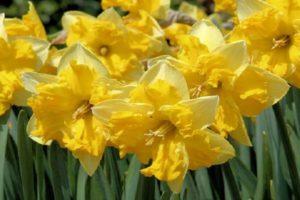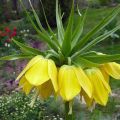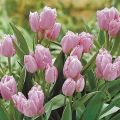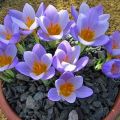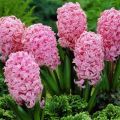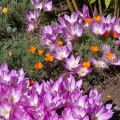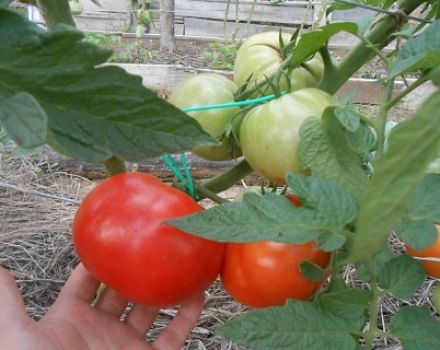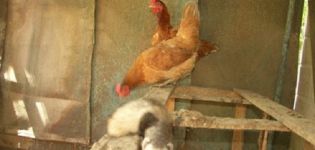Description of the daffodil variety Avalon, rules of care and features of cultivation
In the midst of warm spring days, the Avalon daffodils delight those around them with their incredibly beautiful flowering and aroma. At first glance, a fragile plant does not require much effort in growing and reproducing. Narcissus in combination with other flowers can not only decorate, but also diversify any flower bed. Most often, the plant is planted surrounded by early flowering crops. The composition of yellow daffodils and blue snowdrops makes a special impression.
Description and characteristics of the daffodil Avalon
The daffodil Avalon is a medium-flowering bulbous perennial of the large-crowned class. Plant height reaches 35 centimeters, flower diameter - 10 centimeters. It has a bright, lemon-yellow color, the crown is white, cylindrical in shape with wavy edges, has an unobtrusive, pleasant aroma.
Main pros and cons
The pluses include:
- The plant is not transplanted for ten years if there is no need for its reproduction.
- Despite the love for sunny places, it can grow in shaded areas.
- Perfectly complements any spring composition.
The disadvantage is:
- Untidy appearance of the flower bed after the end of active flowering.
- When infected with a viral infection, there is no way to cure the plant; it must be removed from the flower bed.
In any case, there are more advantages to growing Avalon daffodils than disadvantages. Therefore, it is worth decorating the front garden with such spring flowers.

Features of growing flowers
Before planting a plant, you need to choose a place for its comfortable growth, properly process the bulb, and most importantly, decide on the time of planting flowers. Such knowledge will allow you to admire the exuberant flowering every spring.
Boarding time
The end of summer, the first month of autumn, is considered a good time to plant a plant. Bulbs transplanted immediately after digging up can take root by the beginning of winter, and bloom profusely in spring. It is also allowed to land in the spring, after the snow melts.
If the event is postponed to the end of May, the plants will begin to bloom only after a year.
Choosing a landing site
A flat, non-shaded area protected from the wind is ideal for planting bulbs. Places where water accumulates after rain or melting snow should be avoided. Also, heavy soil or sandy soil is not suitable for growing daffodils.
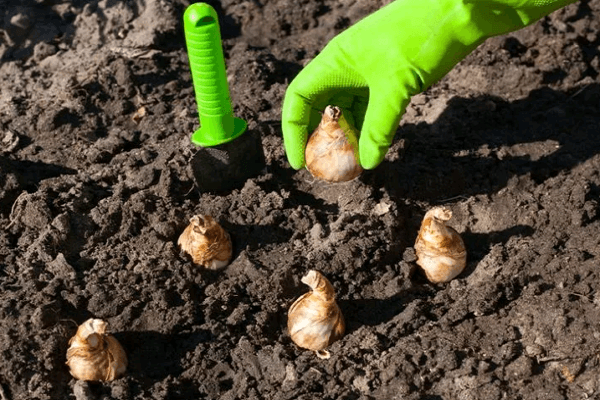
Preparation of seedlings
Before planting daffodil bulbs, you must carefully examine, removing soft, damaged by insects, rotten seedlings. Treat the selected material with any fungicide.
Landing scheme
To keep the front garden looking neat, you should not plant daffodils in large areas. After flowering, the leaves will begin to fade and turn yellow, which will not in the best way affect the aesthetic appearance of the flower bed.
It is better to choose a suitable flower planting scheme:
- Planting in rows at a distance of 15 centimeters between the bulbs and 25 centimeters between the rows.
- Planting daffodils in a checkerboard pattern, 15 by 15 centimeters.
- Combine several onions in one hole.
The ideal solution would be to plant daffodils in a company with early flowers.
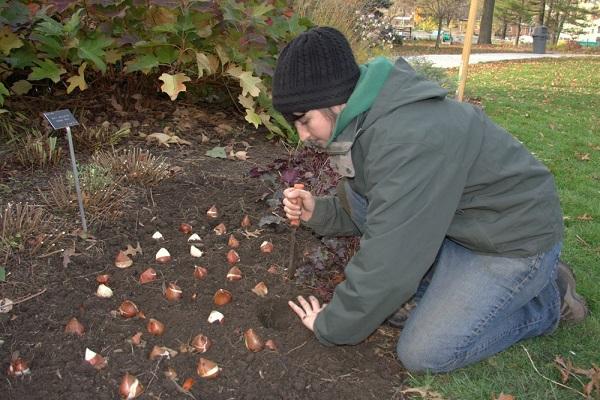
Daffodil care rules
Narcissus is an unpretentious plant that requires minimal maintenance. Spring flowers can be grown even by novice growers.
Watering and fertilizing
With prolonged drought, especially in the southern regions, watering of the plant is carried out during the period of bud formation and flowering. An excess of moisture can destroy the flower, so in the north, daffodils practically do not need additional moisture.
Daffodils planted in prepared, fertilized soil do not require feeding for two years. After that, it is better to add a little ash before winter, but oversaturation with nitrogen fertilizer can lead to rotting of the bulb.
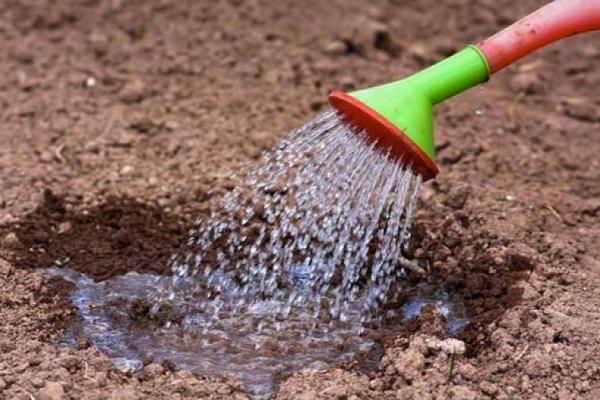
Formation
Daffodil bushes are not subjected to formative pruning, but, on the contrary, are not cut until the greens are completely wilted. Flowers are harvested in the morning and evening hours.
Preparing for the winter period
Bulbs that remain overwintered in the soil must be protected from freezing. They insulate the territory with flowers in the fall - dry leaves of fruit trees or mulch with peat. If the bulbs are dug up for the winter, they need to be dried, and then put in a cool darkened room.
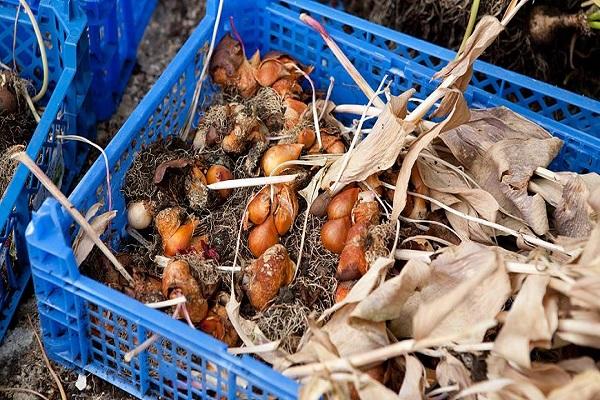
Protection of flowers from diseases and pests
Flowers often suffer from the attack of the wireworm and onion hoverfly. Pests damage the bulb, causing the plant to wilt and not bloom. To protect the bulbs from pests, it is necessary to add one of the preparations to the soil in the spring: Mukhoed, Medvetoks, Zemlin.
Also, plants can be infected with viral infections and bacterial rot. Aphids or gardening tools that are used to cut flowers can spread the infection. To prevent infection, when parasites appear, the plant is treated with special pesticides. Do not allow waterlogging of the soil, apply mineral fertilizers.
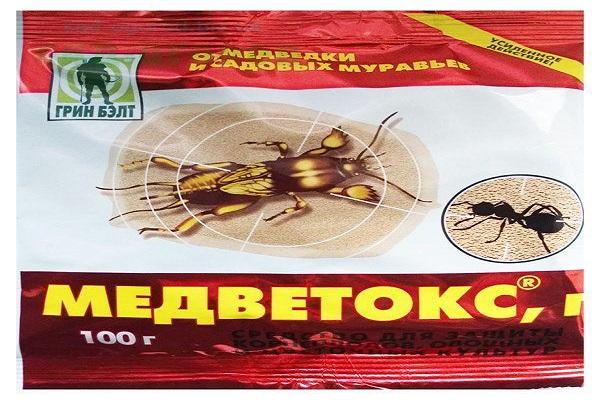
Breeding methods of the variety
Reproduction of the plant is carried out in several ways: by dividing the bush, by small bulbs, by seeds.
- The most common breeding method is to divide the bush. The process takes place closer to autumn, when the leaves turn yellow and the plant's growing season is completely over. The flower bush is dug up, divided into several bulbs, after which the large bulbs are transplanted into a prepared place, at a distance of twenty centimeters from each other.
- Reproduction by small bulbs follows the same principle as dividing a bush. Florists use this method less often, since it will take a lot of time for a full-fledged bulb to form.
- The seed method of growing flowers is in demand among breeders who are developing new varieties of daffodils. The collected seeds are sown at a distance of 10 centimeters from each other, in a prepared box. After sowing, the container is placed in a dark, cool room. The completion of the formation of the bulb occurs after two years. Now the future daffodil can be planted in open ground.
Any method of flower propagation is not difficult and affordable even for novice growers.
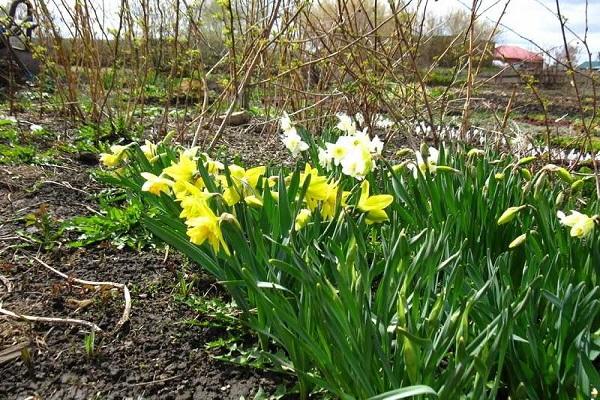
Examples of use in landscape design
This type of flower, such as daffodil, is often used to decorate urban flower beds, summer cottages, small front gardens located near apartment buildings.
- You can make a flower bed in the courtyard of a private house in various shapes: round, semicircular, zigzag. A wild stone, plastic tape, transverse wooden saw cut are suitable for fencing. It is better to create a composition from several types of bulbous flowers. For example, plant daffodil bulbs in the middle of a flower bed, and a white flower around. Plants will bloom, alternately delighting others with their appearance.
- On a vast territory, it is possible to plant daffodils with a wavy ribbon, and plant crocuses with hazel grouses in groups on the sides in a checkerboard pattern.
- If there is no free area near the house, daffodils can be planted in a deep flowerpot, which, after active flowering, can be transferred to a secluded place.
Landscape designers do not recommend planting daffodils over a large area. They are best combined with other bulbous plants.
